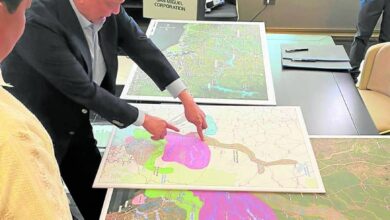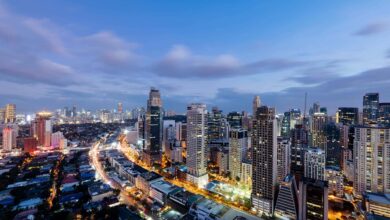
2021 Will be the Year of Philippine Transport Infrastructure
It’s no secret that the transportation system in the Philippines has improved leaps and bounds in the past few years. We dare say it – 2021 will be the year of Philippine transport infrastructure. All things point to the fact that everything is full steam ahead, and we’re excited for what this year brings in terms of addressing a major pain point in the lives of many Filipinos.
A pandemic may have stopped the world in its tracks. However, the Philippines’ transportation sector has been continuously improving despite movement restrictions. For us, 2021 is the year because the list of improvements and finished projects just keeps on getting longer. Here’s a quick look at some of the recent developments in the country’s transport infrastructure:
Expansion and Rehabilitation of Metro Manila’s Train Lines
The Department of Transportation (DOTr) has certainly been busy the past few months.
As the pandemic eases, Filipinos will be given two new stations for the Light Rail Transit Line 2 (LRT-2) by April this year. These two new stations are located at the border of Cainta and Marikina (Emerald Station) and in Lower Antipolo (Masinag Station). This will give commuters even more options as the country continues to open up the economy.
Light Rail Transit Authority (LRTA) Spokesperson Hernando Cabrera said that these stations will be up and running by April 26, 2021. Both have a capacity to cater to a total of 80,000 passengers daily. That’s no small number.
The expansion and improvement of the other train lines are also underway. In fact, the LRT Line 1 (LRT-1) Cavite Expansion is set to be partially operational within the year. The new batch of train cars from Spain and Mexico have already arrived to service this expansion.
Also, the Metro Rail Transit Line 3 (MRT-3) is undergoing continuous rehabilitation. It is slated to be finished by July of 2021. This is after the fact that last September, the MRT-3 achieved a record-high number of operational trains to 22 deployed at one point.
And finally, the brand new Metro Rail Transit Line 7 (MRT-7) is making amazing progress. San Miguel Corporation (SMC) announced last February that the new line is already 54% complete, and is expected to be fully operational by 2022.
RELATED: Metro Manila Decongestion Means Prioritizing Decentralization
Construction and Improvement of Subways and Railways
Progress in Philippine transport infrastructure is not just happening high above ground. The construction of the much-awaited Metro Manila Subway is now back on track, as the DOTr unveiled the head cutter of the tunnel boring machine last February. This huge machine will dig the tunnels for the subway. Once completed, the subway will run all the way from Quirino Highway in the north to the airport terminals down south.
In an interview, DOTr Undersecretary Timothy Batan said that the subway will actually be partially operational by the end of the year. Full, regular operations are targeted for 2025. He went on to explain that based on their feasibility studies, basic fair will start at ₱22, with an additional ₱2 per kilometer traveled. Finally, affordable, effective transportation for all!
Meanwhile, the plans for the Makati City Subway are also making strides. Philippine Infradev Holdings Inc., the developer of the Makati subway, got into a deal with China Construction Second Engineering Bureau Co. just last year. Everything is in motion now, with the planned 10 stations of this subway possibly connecting to the Guadalupe Station of the MRT-3, as well as the Metro Manila Subway.
And finally, even the decades-old Philippine National Railways (PNR) is getting some love, as three new trains were launched just this year. The trains are from Indonesian firm PT Industri Kereta Api (PT-INKA), and all have 15-passenger coaches. It essentially doubled the line’s daily capacity to up to 140,000 passengers.
The PNR provides a huge convenience for commuters. It has stations from Tutuban in Manila all the way to Calamba, Laguna. These new trains breathe new life to the PNR, and we’re excited for even more developments to come.
The Golden Age of Infrastructure
These detailed updates are just a very small part of the total development in terms of Philippine transport infrastructure. In fact, looking at the progress of the Duterte administration’s landmark ‘Build, Build, Build’ project last year shows numerous accomplishments in completed improvement/construction of roads, bridges, airports, and seaports. All of this despite COVID-19.
As of February 2021, the government has spent a total of ₱3 trillion on its infrastructure projects, as reported by the National Economic and Development Authority (NEDA). This huge spending has marked the “golden age of infrastructure” for the country.
It’s also not just in Metro Manila, as the projects span the entire country. There’s the Malolos-Clark Railway Project (PNR North 2) north of the capital region. The Panay-Guimaras-Negros Island Bridges Project is something many Visayans are excited about. The Tagum-Davao-Digos Segment of the Mindanao Railway Project proves Mindanao will never again be left behind. And the list goes on and on.
It’s exciting to see just how much we can look forward to in terms of transportation infrastructure in the country. Soon, the Philippines will have more systems that are efficient, effective, safe, and convenient. Congratulations to the DOTr, the Department of Public Works and Highways (DPWH), and other agencies that have been so hard at work. Thank you! The country owes you a great debt!




